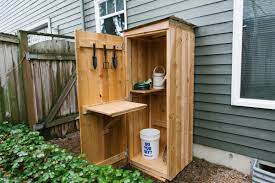In the realm of outdoor spaces, small sheds have emerged as versatile and functional additions to residential properties. These diminutive structures, though modest in size, pack a punch in terms of utility, offering solutions for storage, organization, and even creative pursuits. This article explores the allure of small sheds, delving into their practical uses, design considerations, and the transformative impact they can have on both small and large properties.
The Appeal of Small Sheds
- Space Optimization: Small sheds are designed to optimize space, making them ideal for homeowners with limited outdoor real estate. Whether nestled in a corner of a small backyard or strategically placed on a compact patio, these sheds provide valuable storage without dominating the entire landscape.
- Storage Solutions: One of the primary purposes of small sheds is to offer additional storage space. From gardening tools and outdoor equipment to seasonal decorations and sporting gear, these sheds provide a dedicated spot for items that might otherwise clutter the garage or be left exposed to the elements.
- Garden and Tool Sheds: Small sheds are particularly popular for storing gardening tools and equipment. With designated spaces for shovels, rakes, pots, and soil. These sheds help maintain a tidy and organized outdoor space, making gardening more enjoyable and accessible.
- Compact Workspaces: Some small sheds are designed to serve as compact workspaces or hobby rooms. Whether you’re an artist, a woodworker, or a DIY enthusiast, converting a small shed into a creative sanctuary provides a private and focused space for your projects.
- Aesthetics and Design: Beyond functionality, small sheds contribute to the aesthetics of a property. Their compact size allows for creative design options, and they can be customized to complement the architectural style of the home or add a whimsical touch to the garden.
Design Considerations for Small Sheds
- Size and Scale: The key to a successful small shed design is to consider the size and scale of the available space. A shed that complements rather than overwhelms the surroundings is more likely to enhance the overall aesthetic.
- Purpose-Driven Layout: Tailor the interior layout based on the shed’s intended purpose. Shelves, hooks, and wall-mounted storage can help optimize the space for specific items, whether it’s gardening tools, art supplies, or seasonal decor.
- Natural Light and Ventilation: Incorporate features like windows, skylights, or ventilation systems to enhance the shed’s usability. Natural light not only makes the space more inviting but also aids in tasks that require good visibility.
- Durable Materials: Given their exposure to the elements, choose durable and weather-resistant materials for small sheds. Options like treated wood, metal, or vinyl siding can withstand varying weather conditions and require minimal maintenance.
- Landscaping Integration: Blend the small shed seamlessly into the landscaping. Soften its appearance with climbing plants, decorative pathways, or strategically placed shrubs, ensuring it becomes a harmonious part of the overall outdoor design.
DIY vs. Professional Installation
The decision to opt for a ready-made, DIY shed kit or a professionally designed and installed shed depends on individual preferences, skills, and budget considerations. DIY kits are readily available, providing step-by-step instructions and a cost-effective option for those with basic carpentry skills. However, for a more complex design, structural considerations, or customized features. Consulting with professionals can ensure a seamless and durable installation. Another option is to shop for pre-cut garden shed kits for sale.
Permits and Regulations
Before embarking on a small shed project, it’s essential to check local building codes and regulations. Some areas may require permits for the construction of sheds, and adherence to these guidelines is crucial to avoid legal complications. Understanding the local regulations also ensures that the shed is built to code and meets safety standards.
Conclusion
Small sheds, with their practical utility and design versatility, have become indispensable assets in outdoor living spaces. Whether serving as storage solutions, compact workspaces, or aesthetic enhancements, these sheds contribute to a more organized, functional, and visually appealing environment. With thoughtful design considerations, the integration of durable materials, and compliance with local regulations. Small sheds can transform a small corner of your property into a charming and purposeful retreat.

